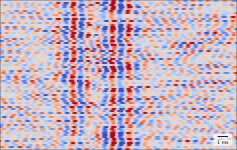(Press-News.org) Besides enabling more potent smartphones and higher download speeds while riding the subway, cutting-edge technologies like artificial intelligence, robotics, and wireless communications are on the verge of revolutionizing well-established industrial fields. A remarkable example is "smart agriculture," which has seen a tremendous increase in the use of drones for various tasks, especially in Japan.
Drones, or "unmanned aerial vehicles" (UAVs), have been the focus of extensive research for agricultural applications. For example, they can take aerial images of a field and, through subsequent image processing, identify problems in specific areas of the crop fields. Another notable use case for UAVs that has been quickly gaining traction is the spraying of pesticides. In Japan, the number of hectares sprayed by drones saw a stunning 45-fold increase from 2016 to 2018. Similarly, the number of registered UAVs for agricultural spraying increased from a mere 227 to 1552 between those years.
While UAVs could be used to either replace or complement traditional pesticide spraying methods, it remains to be proven whether UAVs are superior to conventional methods in many regards.
"Following recent technological demonstrations and verifications at field sites, there is an increasing need for farm management research of smart agricultural technology including cost and efficiency analyses; this is essential for its implementation in farms," explains Yuna Seo, who is Junior Associate Professor at Tokyo University of Science, Japan.
In an effort to address this knowledge gap, Seo led a recent study published in MDPI's Sustainability in which she, with her student Shotaro Umeda, compared different pesticide spraying technologies using realistic data. More specifically, the researchers evaluated and compared the costs, working capacity, and management efficiency of drones versus remote-controlled (RC) helicopters and tractor-mounted boom sprayers for preventively spraying pesticides over rice paddies. They made these comparisons for seven different paddy field areas to take into account differences in scale for each method.
In terms of pest-control costs, the UAVs were only slightly less expensive per unit area than the boom sprayers, mainly due to the low price of drones and savings in fuel. In this regard, the RC helicopters were much more expensive. "Although the purchase cost of boom sprayers is almost double that of UAVs, the fixed costs of both end up being similar because of the high operation, maintenance and repair costs of drones, which are notorious obstacles in UAV introduction and adoption," remarks Seo.
As for the working capacity, RC helicopters could cover much more area per hour than both drones and boom sprayers. Still, drones had a slight advantage in daily area coverage over boom sprayers. Finally, to explore the management efficiency of each method, the researchers used a technique called "data envelopment analysis," which is widely used in economy and operations management to benchmark the performance of manufacturing and service operations. The results indicated that both boom sprayers and UAVs reached maximum or near-maximum efficiency for most paddy areas, while RC helicopters were much less efficient.
Overall, this study showcased the benefits of drones as tools for rice production and compared them to other well-established technologies. But, the use of drones in agriculture is not without limitations, which should be addressed in the future, such as the modification of aviation laws that forbid higher pesticide payloads on drones, as well as maintenance costs. "The total costs and efficiency of UAVs would be comparable to that of boom sprayers, which is not a hindrance for farmers wanting to switch to drones. Therefore, technological advances and deregulation are necessary to expand the use of UAVs while meeting safety measures and ensuring applicability," explains Seo.
In conclusion, this study highlights both the advantages and limitations of using drones as agricultural tools. Still, there is no doubt that smart agriculture as a whole could greatly alleviate the labor shortage problems in countries with a rapidly aging population, of which Japan is a prime example. Given the potential upsides, let us hope UAVs quickly earn their spot in agriculture so that farmers can work smarter, not harder!
INFORMATION:
About The Tokyo University of Science
Tokyo University of Science (TUS) is a well-known and respected university, and the largest science-specialized private research university in Japan, with four campuses in central Tokyo and its suburbs and in Hokkaido. Established in 1881, the university has continually contributed to Japan's development in science through inculcating the love for science in researchers, technicians, and educators.
With a mission of "Creating science and technology for the harmonious development of nature, human beings, and society", TUS has undertaken a wide range of research from basic to applied science. TUS has embraced a multidisciplinary approach to research and undertaken intensive study in some of today's most vital fields. TUS is a meritocracy where the best in science is recognized and nurtured. It is the only private university in Japan that has produced a Nobel Prize winner and the only private university in Asia to produce Nobel Prize winners within the natural sciences field.
Website: https://www.tus.ac.jp/en/mediarelations/
About Yuna Seo from Tokyo University of Science
Yuna Seo, lead author of this study, completed a doctoral course on environmental studies at The University of Tokyo in 2009. She then joined the Department of Industrial Administration at Tokyo University of Science as a Junior Associate Professor. She currently has over 40 papers published to her credit. Her research interests include finding ways to promote sustainable regional development through smart agriculture.
The extreme summer drought of 2018 was a special situation for both nature and scientists. It was very hard on the forest. At the same time, it offered researchers from the Universities of Basel (Switzerland) and Würzburg (Germany) the opportunity to study the reaction of trees to this climatic phenomenon.
Research in the treetops
"The summer of 2018 was hotter and drier than in any other year since weather records began," says ecophysiologist Professor Bernhard Schuldt from the University of Wuerzburg. Together with Dr Matthias Arend and Professor Ansgar Kahmen from the University of Basel, he was significantly involved in the study, which is published in the scientific journal PNAS. "A unique opportunity arose for us to study the influence of ...
A new paper in the Review of Economic Studies indicates that disease can alter the social networks and economic growth of countries for generations, even after the disease itself is eradicated.
Social networks are an important determinant of a country's growth as they affect the diffusion of ideas and the rate of technological progress. But social networks also diffuse diseases that can rapidly spread and dampen growth.
As ideas and germs diffuse through the same human interactions, the network structure of a country ultimately depends on its epidemiological environment. In countries with low prevalence of infectious diseases, high diffusion networks ...
An estimated 334,000 COVID-19 cases are attributable to meatpacking plants, resulting in $11.2 billion in economic damage, according to a new study led by a researcher at the University of California, Davis. The study was published in the journal Food Policy.
It found that beef- and pork-processing plants more than doubled per capita infection rates in counties that had them. Chicken-processing plants increased transmission rates by 20 percent. The study looked specifically at large meatpacking plants generating more than 10 million pounds per month.
Conservative estimate
Researchers said both the economic impact ...
LAWRENCE -- How did the first humans migrate to populate North America? It's one of the great scientific puzzles of our day, especially because forbidding glaciers covered most of Canada, Alaska and Pacific Northwest during the Last Glacial Maximum (LGM). These glaciers limited human movements between northern ice-free areas, like the Beringia Land Bridge, and southern ice-free areas, like the continental United States.
Now, research from the University of Kansas into the whole genomes of the American pine marten and Pacific pine marten -- weasel-like mammals that range today from Alaska to the American Southwest -- could shed light ...
Philadelphia, April 15, 2021 - A new study shows that markers of fear recall differ between men and women, but in a hormone-dependent manner.
Aberrant fear-memory processing in the brain is thought to underlie anxiety disorders, which affect hundreds of millions of people worldwide. The neurobiological mechanisms underlying these disorders remain poorly understood, but recent studies suggest that neural oscillations in the prefrontal cortex can reflect the strength of fear recall activity, providing a physiological measure.
Women suffer from anxiety disorders at twice the rate of men and indeed ...
Researchers in Sweden have developed a more eco-friendly way to remove heavy metals, dyes and other pollutants from water. The answer lies in filtering wastewater with a gel material taken from plant cellulose and spiked with small carbon dots produced in a microwave oven.
Reporting in the journal Sustainable Marials and Technologies, researchers from KTH Royal Institute of Technology, in collaboration with Politecnico di Torino, engineered a more sustainable technique for producing hydrogel composites, a type of material that is wteidely studied for wastewater decontamination.
Minna Hakkarainen, who leads ...
PITTSBURGH, April 15, 2021 - Oncologists faced with treating older women with breast cancer often must decide if the treatment may be more detrimental than the cancer. A study published today in JAMA Network Open by researchers at UPMC Hillman Cancer Center and the University of Pittsburgh School of Medicine sheds new light on this choice and suggests the rate of cancer recurrence or survival may be no different in treated vs. untreated elderly patients diagnosed in the early stages of the cancer diagnosed most commonly in women.
"As a breast surgeon, I want to give my patients the best chance of survival with the best quality ...
LIBREVILLE, Gabon (April 15 2021) - A team of scientists led by the Wildlife Conservation Society (WCS) and working closely with experts from the Agence Nationale des Parcs Nationaux du Gabon (ANPN) compared methodologies to count African forest elephants (Loxodonta cyclotis), which were recently acknowledged by IUCN as a separate, Critically Endangered species from African savannah elephants. The study is part of a larger initiative in partnership with Vulcan Inc. to provide the first nationwide census in Gabon for more than 30 years. The results of the census are expected later this year.
Contrary to savannah elephants (Loxodonta africana) which can be counted directly, usually through aerial survey, accurately censusing elusive forest ...
The processing of information inside the brain is one of the body's most complex processes. Disruption of this processing often leads to severe neurological disorders. The study of signal transmission inside the brain is therefore key to understanding a myriad of diseases. From a methodological point of view, however, it creates major challenges for researchers. The desire to observe the brain's nerve cells operating 'at the speed of thought', but without the need to place electrodes inside the brain, has led to the emergence of two techniques featuring high temporal resolution: electroencephalography (EEG) and magnetoencephalography (MEG). Both methods enable the visualization ...
A technique called percutaneous peripheral nerve stimulation yields "impressive" reductions in pain scores and opioid use during the first week after common orthopedic surgery procedures, concludes a randomized clinical trial published Online First in Anesthesiology, the official peer-reviewed journal of the American Society of Anesthesiologists (ASA), today.
The benefits of postoperative nerve stimulation were "much greater than what we had anticipated, concurrently reducing pain scores by more than 50 percent and opioid consumption by 80 percent," according to the randomized trial report by Brian M. Ilfeld, M.D., MS, and colleagues. With further study, they believe that ...






